
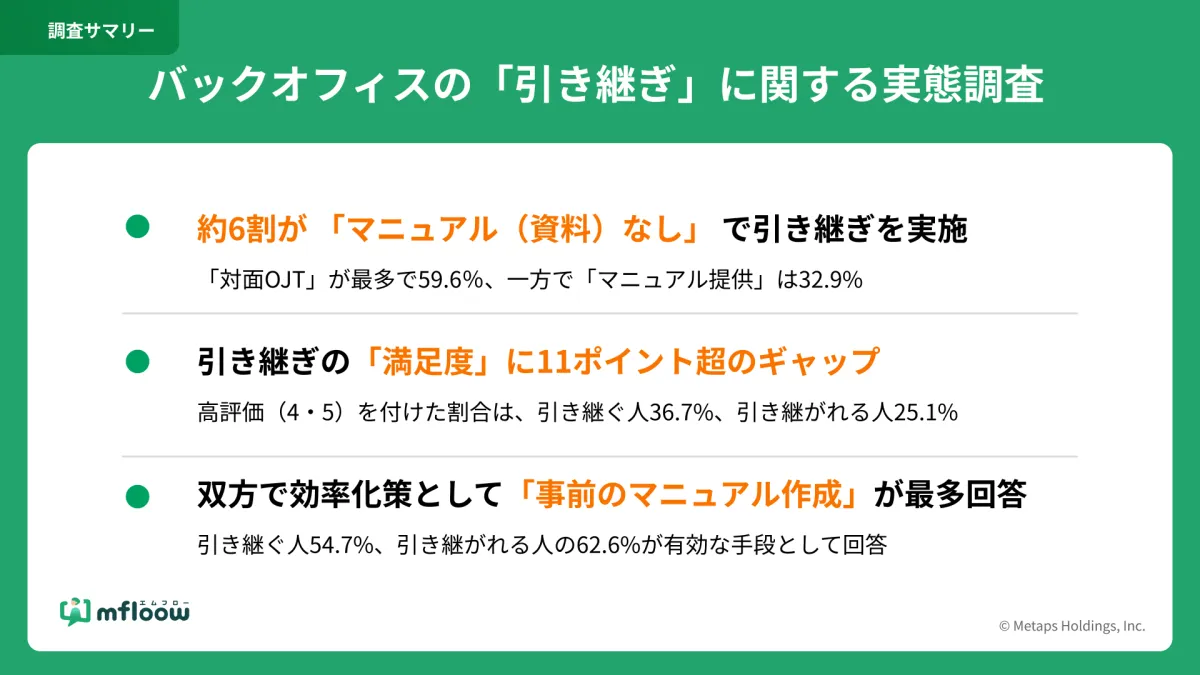
The Significant Gap in Employee Handover Success Revealed by New Study
The Reality of Employee Handovers: Insights from a New Survey
In today's fast-paced world of business, employee handovers are inevitable due to various transitions such as resignations, maternity leave, or departmental shifts. Yet, surprisingly, around 60% of back office professionals conduct these critical handovers without any formal manuals. A recent investigation by Metaps Holdings, targeting 324 back office staff members, has unveiled this startling fact and shed light on the issues faced during the handover process.
The Handovers: A Necessary Evil
Handover processes are crucial in ensuring the continuity of operations. Despite their significance, both parties involved—the one handing over duties and the one receiving them—often find these transitions tedious and stressful. The nature of back office tasks often relies heavily on the individual experiences and knowledge of the previous employee, which makes these handovers more complex and prone to challenges.
The survey results indicate that a preference for face-to-face on-the-job training (OJT) dominates, with 59.6% of respondents favoring this method, followed closely by verbal explanations at 55.9%. Alarmingly, only 32.9% utilized any written manuals during the process. This lack of documentation for nearly two-thirds of transitions raises concerns about the effectiveness and reliability of information conveyed during the handover.
Understanding the Disconnect
The survey also revealed a troubling disparity in satisfaction regarding understanding post-handover responsibilities. While 36.7% of those handing over felt confident in the communication, only 25.1% of the recipients shared that sentiment, resulting in a noticeable 11-point gap in their perceived satisfaction levels. This dynamic suggests that even when one party believes they’ve effectively communicated all necessary information, the other may not feel equally informed or prepared.
The Call for Better Documentation
What could potentially bridge this gap? The most commonly proposed solution among those surveyed is the creation of manuals prior to handover (54.7% among those transferring tasks and 62.6% among those receiving them). In addition, effective strategies such as utilizing tools for visualizing workflows and allowing adequate time for handovers were also highlighted as essential for improvement.
This drastic need for structured documentation indicates a pressing requirement within organizations to simplify the handover process—suggesting that a more formalized approach can alleviate the stress and uncertainty faced by employees transitioning roles.
About mfloow
Metaps Holdings has developed “mfloow,” a comprehensive employee lifecycle management tool designed to facilitate smooth transitions by managing all aspects related to employee changes, including onboarding, offboarding, and leave management. By automating these back office tasks, mfloow seeks to eliminate common issues such as task delays and communication errors, enabling employees to focus more on creative and productive aspects of their roles.
With features like real-time visualizations of workflow progress, automated notifications post-completion, and AI-generated templates for task management, mfloow aims to streamline the transition process significantly.
Conclusion
As businesses continue to evolve in an increasingly digital world, understanding and improving the employee handover process is vital. By addressing the apparent gaps in communication and documentation, organizations can enhance operational efficiency and maintain robust workplace morale.
For further information about the survey and detailed findings, please visit mfloow.
Survey Overview
- - Target Audience: Back office employees from companies with less than 500 employees who have engaged in handover processes.
- - Method: Internet-based survey conducted on May 26, 2025.
About Metaps Holdings
Founded by Yuichiro Yamazaki, Metaps Holdings aims to revolutionize employee management through innovative software solutions, addressing time-consuming back office processes with automated systems.
For more information, please visit Metaps Holdings.
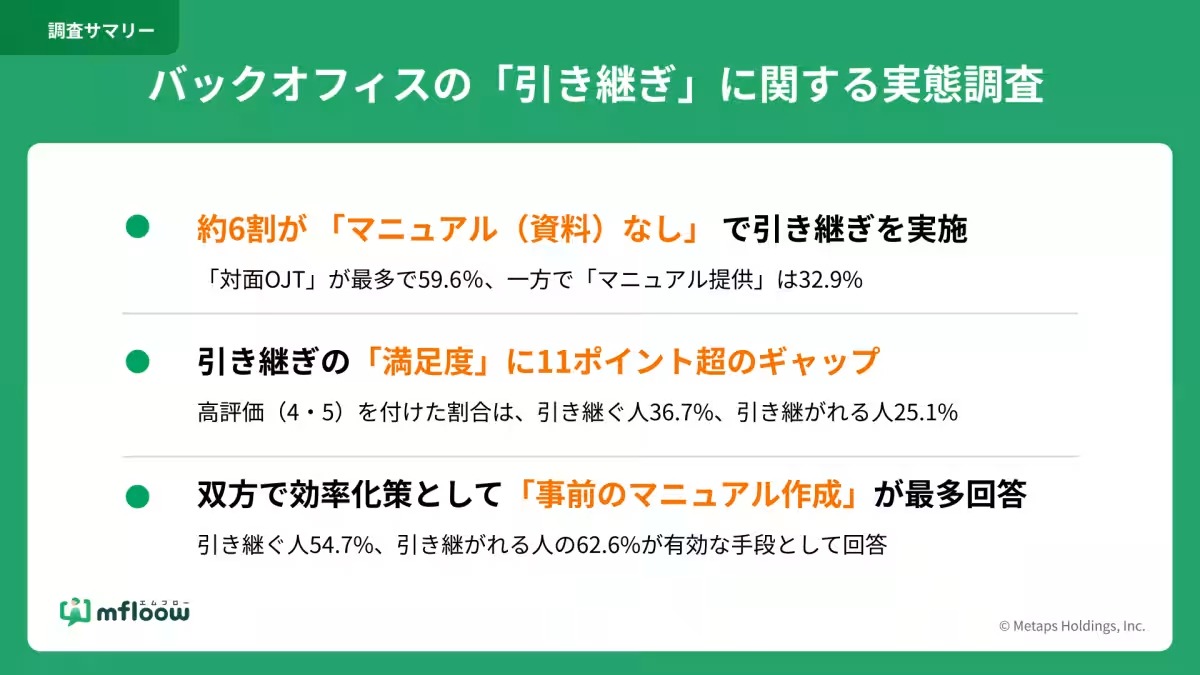
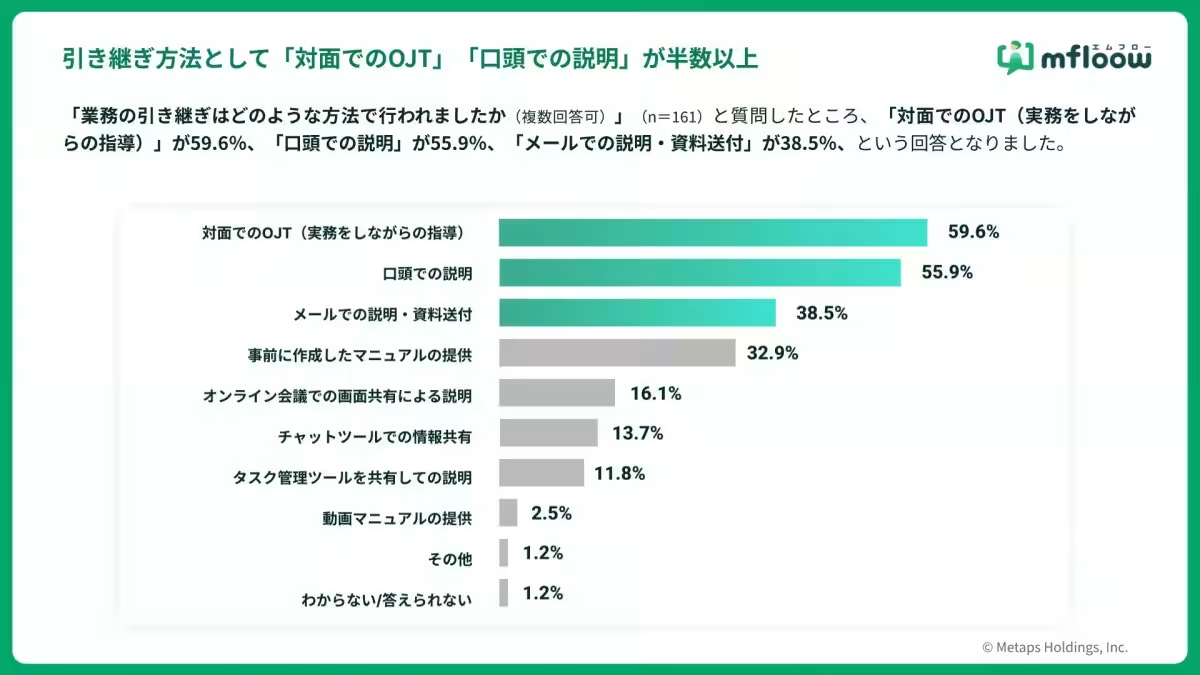
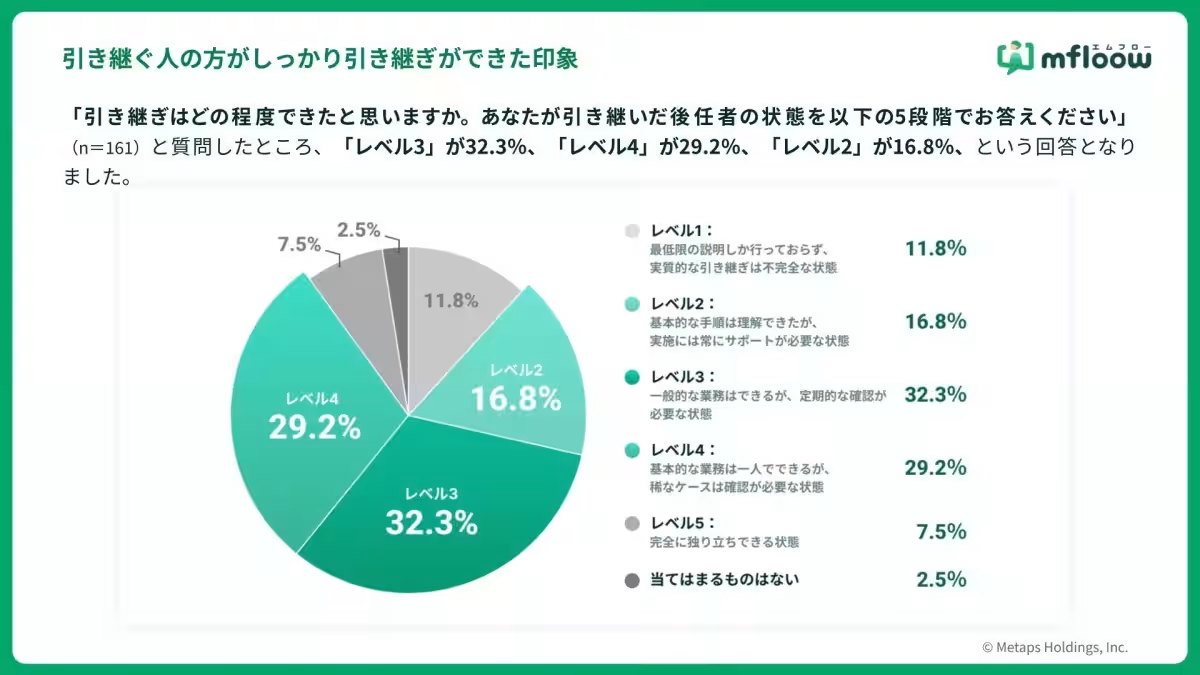
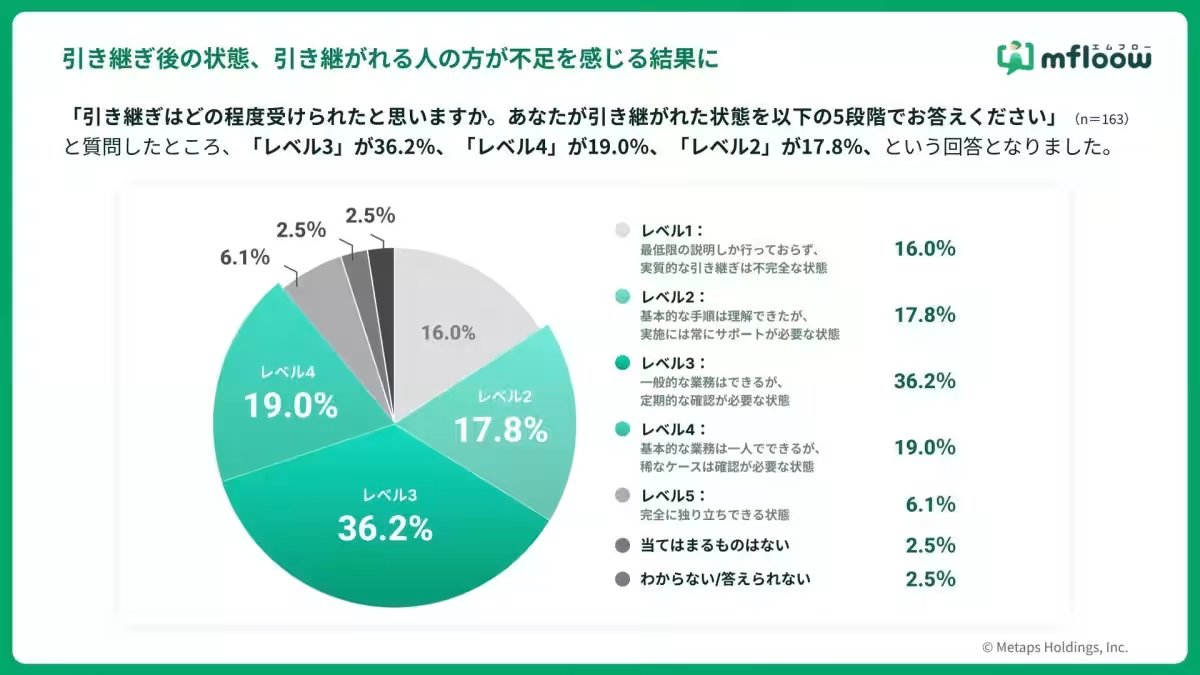
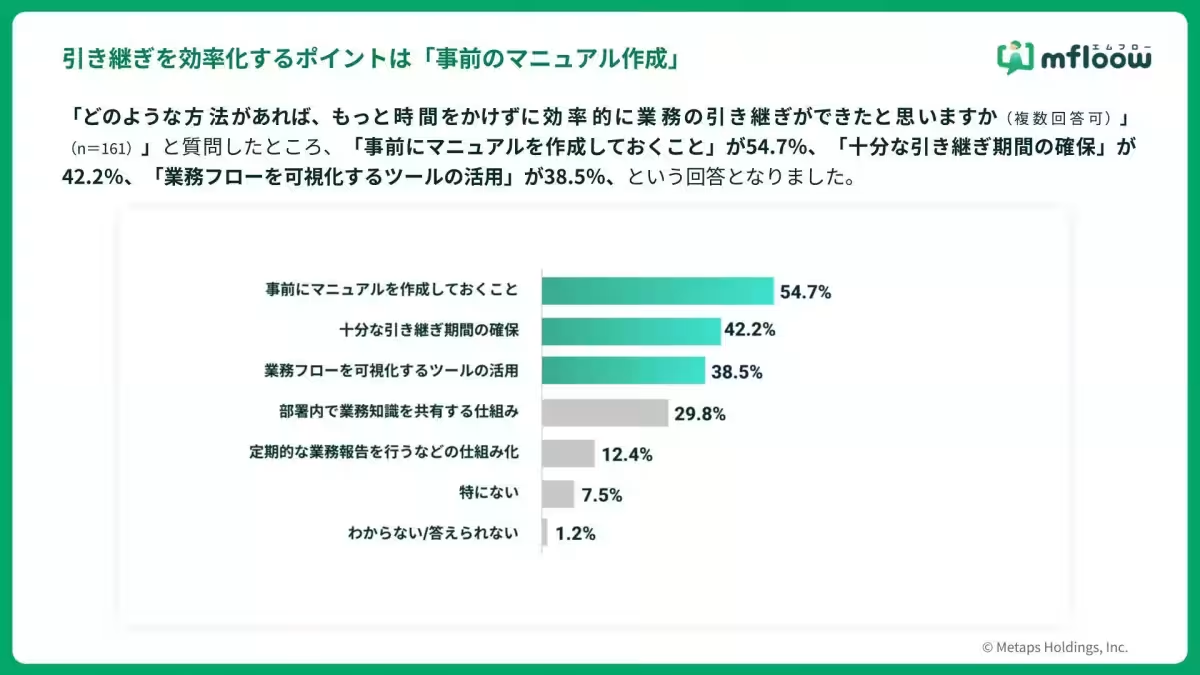
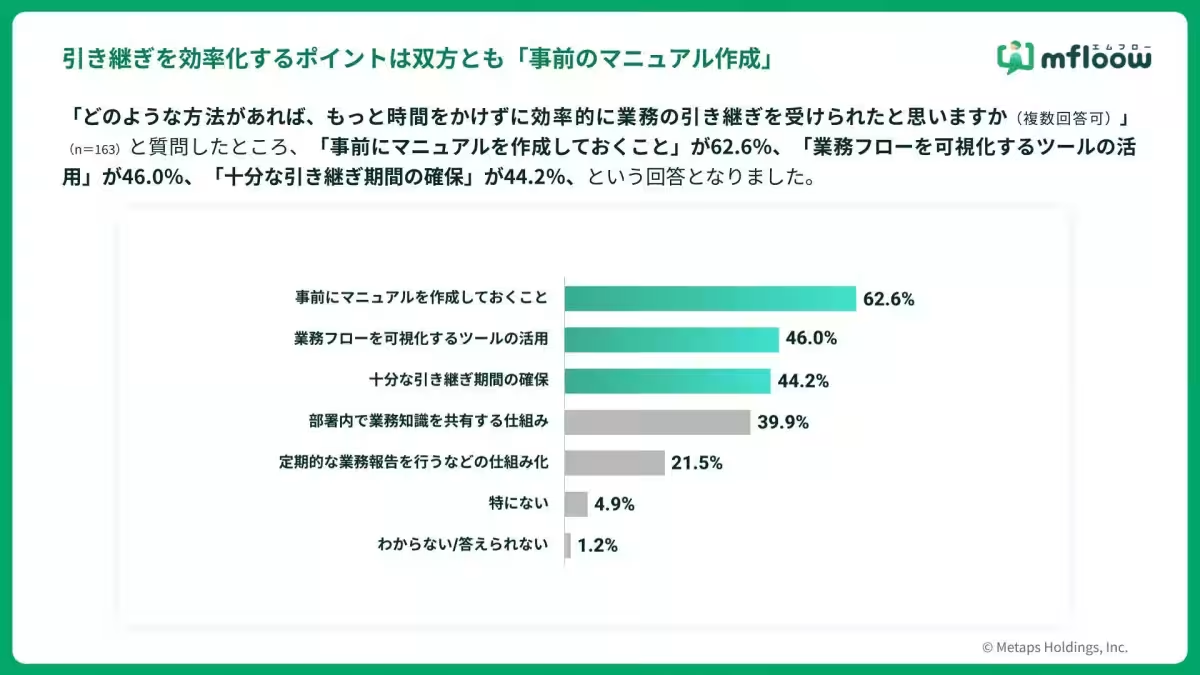
Topics Business Technology)





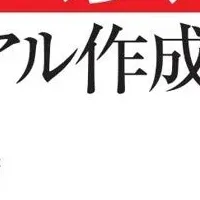




【About Using Articles】
You can freely use the title and article content by linking to the page where the article is posted.
※ Images cannot be used.
【About Links】
Links are free to use.